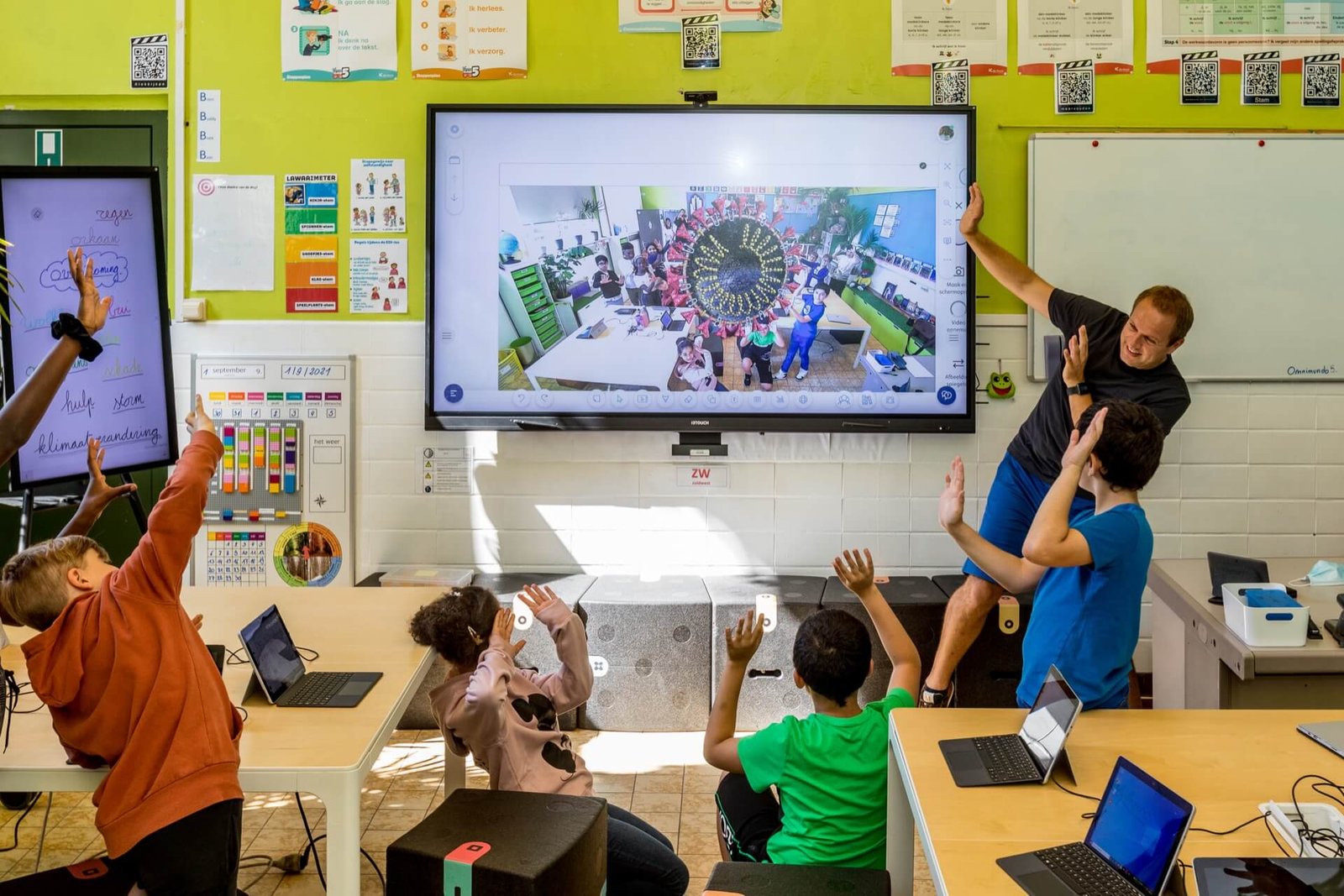The traditional classroom model is undergoing a significant transformation. With the rise of flipped classrooms, the way students engage with learning is changing. In a flipped classroom, the roles of homework and class time are reversed. Instead of listening to lectures in class and doing homework at home, students first learn the content on their own. Then, they use classroom time for discussions, activities, and problem-solving.
In this blog, we’ll explore how flipped classrooms are redefining homework and classroom interaction, the benefits, and how educators can implement this model effectively.
What is a Flipped Classroom?
A flipped classroom is an instructional model that shifts the learning process. Instead of receiving direct instruction in class, students engage with new material at home through videos, readings, or online tutorials. Classroom time is then used for active learning, where students collaborate, ask questions, and apply their knowledge in a more hands-on way.
In traditional classrooms, the teacher delivers a lecture, and students complete homework to practice what they’ve learned. In flipped classrooms, students first engage with the content outside of class and then apply it during class, which allows for more meaningful interaction with peers and teachers.
How does it differ from traditional learning?
In traditional learning, the teacher leads the lesson while students take notes. In a flipped classroom, students take responsibility for learning the content beforehand, and class time becomes a space for collaboration, discussions, and problem-solving.
1. Benefits of Flipped Classrooms
Flipped classrooms offer several benefits for both students and teachers. These advantages can lead to better academic outcomes and a more engaging learning environment.
More Active Classroom Participation
One of the biggest advantages of flipped classrooms is the active participation it promotes. Instead of passively listening to lectures, students actively engage with the material during class. They work on projects, participate in discussions, and solve problems in real time. This hands-on approach helps them better understand the subject matter.
Individualized Learning Pace
Another benefit of flipped classrooms is that students can learn at their own pace. At home, they can pause or rewatch video lectures and review materials as needed. This flexibility allows students to take the time they need to grasp difficult concepts. In class, they can ask questions and receive personalized guidance from the teacher.
Better Use of Class Time
Flipped classrooms make better use of valuable class time. Since students have already learned the basics at home, class time can focus on deepening understanding and applying concepts. Teachers can spend more time helping students with specific challenges, providing support where it’s needed most.
Why is active learning important?
Active learning engages students more deeply than traditional methods. It encourages them to think critically, collaborate with peers, and apply what they’ve learned, which leads to a better understanding of the material.
2. Challenges of Flipped Classrooms
While flipped classrooms offer many benefits, they also come with challenges. Teachers and students must adapt to a new way of learning, and this transition can sometimes be difficult.
Access to Technology
One major challenge is ensuring that all students have access to the technology they need to participate in flipped learning. Students need devices and internet access to watch video lectures or complete online activities at home. Without these resources, some students may struggle to keep up.
Increased Teacher Preparation
Flipping a classroom requires more preparation from teachers. They must create or find quality materials for students to use at home, such as instructional videos or interactive lessons. Planning engaging classroom activities that encourage active learning also requires time and effort.
Student Accountability
Another challenge is holding students accountable for completing the preparatory work at home. If students don’t watch the video lectures or review the materials, they will come to class unprepared. Teachers need strategies to ensure that students take responsibility for their own learning.
How can these challenges be addressed?
Teachers can overcome these challenges by providing support for students without access to technology, creating engaging at-home materials, and implementing systems to track student progress.
3. How Flipped Classrooms Redefine Homework
In flipped classrooms, the concept of homework changes dramatically. Instead of completing assignments that reinforce classroom lessons, students use homework time to learn new material. This shift allows homework to become an integral part of the learning process, rather than just extra practice.
Homework as Preparation
In traditional models, homework reinforces what students learned in class. In flipped classrooms, homework serves as preparation for class activities. Students watch videos, read materials, or complete online lessons to familiarize themselves with new content. This ensures that they are ready to engage in discussions and activities during class time.
More Meaningful Classroom Interaction
With students coming to class prepared, teachers can use class time for more meaningful interactions. Instead of reviewing basic concepts, teachers can facilitate deeper discussions and problem-solving sessions. This interaction enhances students’ understanding and encourages collaborative learning.
Why does this redefine homework?
Flipped classrooms make homework a key part of learning new content. It shifts the focus from passive completion of tasks to active engagement, where homework prepares students for productive classroom activities.
4. The Role of Technology in Flipped Classrooms
Technology plays a crucial role in flipped classrooms. It provides the tools that students need to access learning materials outside of class and participate in interactive lessons.
Video Lectures and Tutorials
In most flipped classrooms, teachers provide video lectures that students watch at home. These videos replace traditional in-class lectures, allowing students to learn the content at their own pace. Video platforms like YouTube or educational tools like Khan Academy offer a wide range of resources that teachers can use.
Interactive Learning Tools
In addition to video lectures, teachers can use interactive tools to engage students. Online quizzes, discussion boards, and virtual labs give students the opportunity to apply what they’ve learned and receive immediate feedback. These tools enhance the learning experience and keep students engaged.
How does technology enhance learning?
Technology in flipped classrooms allows students to access content at their convenience, engage with interactive resources, and receive feedback. This flexibility makes learning more personalized and efficient.
5. Flipped Classrooms and Student-Centered Learning
Flipped classrooms promote student-centered learning. By placing the responsibility for learning on the student, this model encourages independence and critical thinking. Students are more active participants in their education, and teachers serve as facilitators rather than lecturers.
Empowering Students
In a flipped classroom, students have more control over their learning. They can decide when and how to engage with the material at home. This autonomy builds self-discipline and empowers students to take ownership of their education.
Collaborative Learning
Flipped classrooms also promote collaboration. Since class time focuses on activities, students work together on projects, solve problems in groups, and share ideas. This teamwork helps students develop communication skills and learn from each other.
How does this benefit students?
By encouraging students to take an active role in their learning, flipped classrooms help build critical thinking, collaboration, and independence. These skills are valuable for both academic success and future careers.
6. Tips for Implementing a Flipped Classroom
If you’re considering implementing a flipped classroom, here are a few tips to ensure success:
- Start Small: Begin by flipping just one or two lessons to get students comfortable with the new approach. Gradually expand to more lessons as you and your students adapt.
- Provide Clear Instructions: Make sure students understand what is expected of them before class. Provide detailed instructions for completing the at-home portion of the lesson.
- Use a Variety of Resources: Incorporate different types of media, such as videos, articles, and interactive lessons, to keep students engaged.
- Monitor Student Progress: Use online tools to track whether students are completing the preparatory work. Encourage accountability by having students submit summaries or questions about the material.
- Encourage Collaboration: Use class time to encourage group work and peer discussions. Create activities that require students to work together and share their learning experiences.
Conclusion
Flipped classrooms are revolutionizing the way students learn. By shifting homework to the learning phase and using class time for collaboration and active learning, this model enhances student engagement and improves outcomes. While it comes with challenges, the benefits of flipped classrooms—such as individualized learning, deeper classroom interactions, and student empowerment—make it a powerful tool for modern education.
As more schools adopt flipped classrooms, educators can continue to refine and adapt this model to meet the needs of their students.





